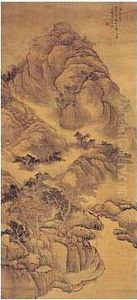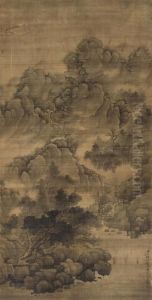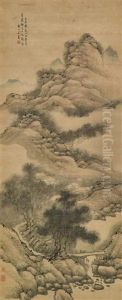Fa Ruozhen Paintings
Fa Ruozhen was a Chinese painter, poet, and calligrapher during the late Ming and early Qing dynasties. Born in 1613, he lived through a tumultuous period in Chinese history, witnessing the fall of the Ming dynasty and the establishment of the Qing dynasty by the Manchu invaders. Despite the political upheavals, Fa Ruozhen managed to cultivate a career as a scholar-official while also dedicating much of his life to the arts.
Fa Ruozhen's artistic style was deeply rooted in the literati tradition of Chinese painting, which valued personal expression and scholarly learning over the more decorative and commercial styles preferred by the professional painters of the time. His work often featured landscapes, which were a popular genre among literati painters, reflecting their philosophical and poetic ideals. Fa Ruozhen was particularly noted for his shanshui (mountain and water) compositions, where he showcased his skillful brushwork and use of ink wash.
As a poet and calligrapher, Fa Ruozhen was also accomplished, integrating his literary skills into his paintings, often inscribing poems onto his artworks. This practice was common among the literati, as it created a dialogue between the visual and written arts, enriching the overall aesthetic and intellectual experience of the work.
Fa Ruozhen's life and career were marked by his adherence to the ideals of the literati, who valued integrity, personal cultivation, and artistic expression over wealth and official rank. Despite the chaos of the dynastic transition, he continued to produce art that was reflective of his personal journey and the broader cultural values of the literati class. His works are now considered important contributions to the canon of Chinese literati painting, and they offer insight into the cultural and historical context of his time.
Fa Ruozhen passed away in 1696, leaving behind a legacy that would inspire future generations of Chinese artists. His dedication to literati principles and his fusion of painting, poetry, and calligraphy exemplify the intellectual pursuits of Chinese scholars during the Ming and Qing dynasties. Fa Ruozhen's art remains a subject of study and admiration, encapsulating the enduring spirit of Chinese scholarly art.






